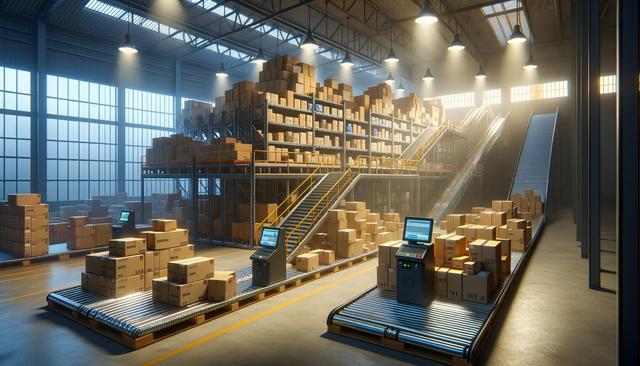
Storage Specials Near Me
Understanding the Fundamentals of Warehouse Inventory Management
Warehouse inventory management involves overseeing the storage, movement, and tracking of goods within a warehouse to maintain accuracy and meet demand efficiently. It encompasses various activities such as inventory tracking, stock replenishment, demand forecasting, and order fulfillment. A well-organized approach to warehousing inventory management ensures that products are always available when needed, while also minimizing excess stock and reducing holding costs. As businesses grow, the complexity of managing inventory increases, making it necessary to implement systems and processes that can adapt to changing needs and volume.
Key elements of effective inventory management include:
- Utilizing barcode or RFID systems for real-time tracking
- Implementing inventory control software for improved visibility
- Establishing reorder points to avoid overstock or stockouts
- Conducting regular audits and cycle counts
By integrating these practices, companies can enhance their warehouse storage and distribution strategies, ensuring smooth operations and higher customer satisfaction.
The Role of Technology in Modern Warehousing
Technology plays a pivotal role in transforming traditional warehouses into smart and efficient hubs. With the help of advanced warehouse management systems (WMS), businesses can automate inventory processes, reduce errors, and optimize space utilization. These systems offer real-time data on inventory levels, inbound and outbound shipments, and order status, empowering managers to make informed decisions quickly.
Moreover, integration with 3PL warehouse providers allows companies to expand their reach without investing heavily in infrastructure. A 3PL warehouse can offer scalable solutions for warehousing inventory management, including transportation, packaging, and order fulfillment. This partnership is particularly beneficial for businesses dealing with seasonal demand or rapid growth, as it ensures flexibility and cost-efficiency.
When searching for Storage Specials Near Me In {city}, it’s worthwhile to consider facilities that are equipped with modern technology and offer customizable solutions suited to your inventory needs.
Best Practices for Optimizing Warehouse Storage and Distribution
Improving warehouse storage and distribution begins with strategic planning and layout design. An efficiently designed warehouse layout reduces travel time, increases picking efficiency, and improves overall productivity. It’s essential to categorize inventory based on demand frequency and size, placing high-demand items in easily accessible areas.
Here are several best practices to consider:
- Implement a First-In-First-Out (FIFO) system to maintain inventory freshness
- Use vertical storage solutions to maximize space
- Designate specific zones for receiving, picking, packing, and shipping
- Train staff regularly to maintain consistency and safety
Incorporating these techniques into your warehouse operations not only improves efficiency but also enhances the accuracy and reliability of your warehouse inventory management system.
Benefits of Partnering with a 3PL Warehouse Provider
Outsourcing warehousing functions to a 3PL warehouse provider brings numerous benefits to businesses of all sizes. These providers offer end-to-end logistics solutions including storage, handling, and transportation, allowing companies to focus on core activities such as product development and customer service. A 3PL partner brings expertise, advanced technology, and scalability that can be difficult to achieve in-house.
Key advantages include:
- Access to a wider distribution network
- Reduced capital expenditures and operating costs
- Improved delivery times and customer satisfaction
- Flexibility to adapt to market changes and seasonal fluctuations
When evaluating options, it’s important to seek out providers that specialize in warehouse storage and distribution and can support your specific industry requirements. Finding Storage Specials Near Me In {city} can also help reduce costs while gaining access to professional warehousing services.
Choosing the Right Solution for Your Business
Determining the best inventory management solution for your business depends on several factors including the size of your operations, the complexity of your supply chain, and your growth projections. Whether managing your own facility or partnering with a 3PL warehouse, it’s crucial to ensure that your chosen strategy aligns with your operational goals and customer expectations.
Consider asking the following questions:
- Does the facility offer flexible storage options?
- Are there any Storage Specials Near Me In {city} that could lower overhead?
- Is the provider experienced in warehouse storage and distribution?
- What technology systems are in place to support inventory tracking?
By addressing these questions, businesses can make informed decisions that contribute to long-term efficiency and success in their warehousing operations.
Conclusion: Building a Resilient Inventory Management Strategy
Warehouse inventory management is a vital component of a successful supply chain. Whether leveraging internal systems or partnering with a 3PL warehouse, the goal remains the same: to store, manage, and distribute products efficiently. Businesses that invest in proper warehouse storage and distribution strategies can reduce costs, improve service levels, and adapt more easily to market demands. If you’re exploring Storage Specials Near Me In {city}, be sure to assess not just the cost, but also the capabilities and support available. A well-managed warehouse is more than storage—it’s the foundation of operational excellence.